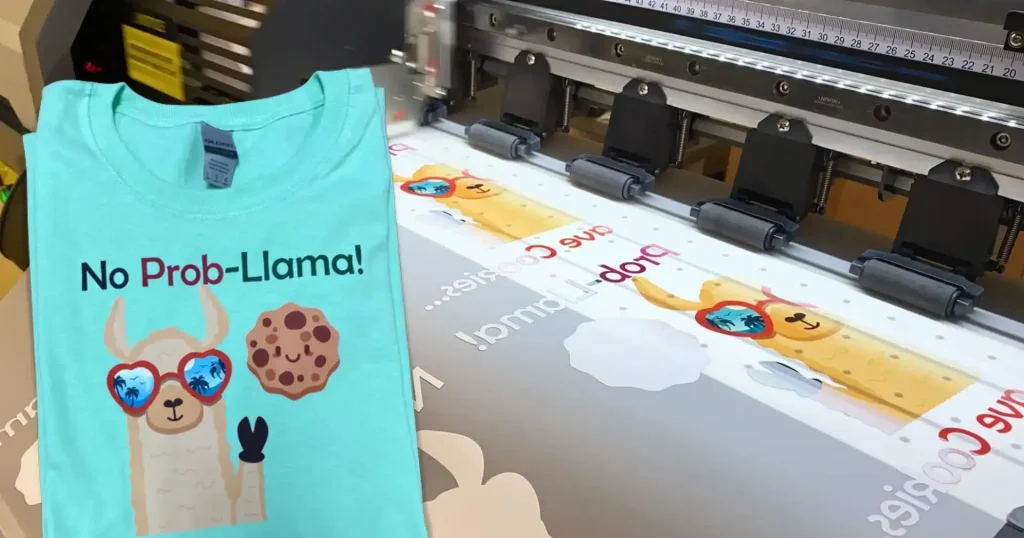Starting a DTF printing business can ignite your entrepreneurial spirit with minimal financial risk. As demand for custom apparel surges, understanding the nuances of how to start DTF printing effectively is crucial for success in this vibrant market. With relatively low investment printing options available, many budding entrepreneurs are joining the ranks of DTF printing startups that cater to a diverse clientele seeking personalized designs. This innovative printing method offers quick turnaround times and stunning visuals for t-shirts, hoodies, and more, significantly contributing to its growing popularity. In this guide, we’ll explore essential equipment, cost considerations, and marketing strategies to launch your custom apparel business and stand out in a competitive landscape.
Launching a direct-to-film printing enterprise provides a fantastic opportunity for individuals looking to establish their place in the custom merchandise industry. Embracing this innovative printing technology enables entrepreneurs to create unique designs that resonate with consumers. By focusing on affordable printing techniques and smart budget management, new ventures can thrive in a saturated market. Moreover, the versatility of DTF printing equipment allows for creativity in apparel and accessory production, appealing to various customer tastes. In this discussion, we will delve into the important steps to effectively initiate your custom print business and leverage the growing trend of personalized fashion.
Exploring the Basics of DTF Printing
DTF printing, or Direct to Film printing, is a cutting-edge technology that empowers businesses to create stunning designs on various textiles. The core of this printing technique lies in its simplicity, where inks are printed onto a special film that is then heat-transferred onto fabric. This method provides the flexibility to print vibrant colors, intricate details, and a wide range of fabric types, making it an attractive option for custom apparel businesses. With the customization trend rapidly rising, learning the ins and outs of DTF printing can open doors to lucrative opportunities.
Moreover, the DTF printing process stands out because of the impressive durability of the prints produced. Unlike some other printing techniques, DTF prints are resistant to cracking and fading, ensuring that custom apparel remains visually appealing even after multiple washes. Entrepreneurs looking to start a DTF printing business should grasp these nuances, as they will not only enhance their product offerings but also improve customer satisfaction, ultimately leading to repeat business.
Understanding Startup Costs for DTF Printing
When considering the launch of a DTF printing startup, it’s vital to understand the associated costs. Startup costs generally range between $2,000 and $5,000, which encompasses essential equipment such as a DTF printer, heat press, inks, and transfer films. It’s crucial for budding entrepreneurs to meticulously budget these expenses to avoid overextending their finances before generating any revenue. Finding a balance between quality and price is key, especially for those aiming to minimize initial investments while ensuring a solid foundation for their business.
A smart approach to managing printing equipment costs involves researching entry-level options and considering the purchase of used gear. Many successful DTF printing businesses have started by sourcing pre-owned printers and heat presses that still deliver high-quality outputs. By strategically investing in equipment that meets their needs without breaking the bank, newcomers can explore the profitable realm of custom apparel without the heavy financial burden that often accompanies startups.
Selecting Your Niche Market in DTF Printing
Identifying a niche market is one of the most critical steps in establishing a successful DTF printing business. Entrepreneurs should take time to research potential customers in their local area or online to determine which products are in high demand. Custom products such as t-shirts, hoodies, and tote bags are popular among small businesses and individuals alike, making them ideal offerings for a newcomer. By focusing on specific segments, like sports teams or local events, you can tailor your marketing efforts and resonate with your audience more effectively.
Moreover, sampling prototypes of your designs can play a substantial role in this process. By creating various samples, potential clients can see firsthand the quality of your work, which helps establish credibility and builds trust in your brand. Displaying these samples at local fairs, markets, or online platforms is a fantastic strategy to increase exposure and excitement about your DTF printing services.
Crafting a Strategic Business Plan
The foundation of any successful DTF printing business lies in a well-structured business plan. This includes essential elements such as deciding on business models—whether you wish to operate solely online or explore physical retail options. Online platforms like Etsy and Shopify provide a cost-effective means to establish a presence without the overhead of a physical location. Structuring your business around an easily manageable model will reduce stress and allow for smoother operations, especially during the crucial launch phase.
Additionally, understanding the legal requirements for your business operation is paramount. It’s essential to familiarize yourself with local regulations regarding business licenses, permits, and taxes to avoid any unforeseen challenges. Maintaining compliance not only protects your business legally but also establishes your brand’s reputation, which can be beneficial in acquiring new clients.
Effective Marketing Techniques for DTF Printing
To ensure the success of your DTF printing business, implementing robust marketing strategies is imperative. Creating a strong online presence through social media platforms can significantly enhance your visibility and engagement with potential customers. Utilizing visually appealing content such as high-quality images of your prints, videos of the printing process, and customer testimonials can attract attention. Platforms like Instagram and TikTok are excellent for promoting such content, giving you the ability to tell your brand’s story and connect with your audience.
Collaborating with local influencers or businesses can also expand your reach to new demographics. Consider offering promotional discounts or special packages to encourage first-time customers to try your services. Engaging in local community events and pop-ups can further increase your visibility, allowing word-of-mouth to play a vital role in establishing a loyal customer base.
Continuous Learning and Community Involvement
In the rapidly evolving world of DTF printing, continuous education is key to staying competitive. Engaging in workshops and online courses specifically focused on DTF printing techniques can greatly enhance your skills and knowledge base. Platforms like YouTube are treasure troves of tutorials, providing insights from expert printers who share valuable tips that can refine your processes and improve overall output quality.
Further, networking with other entrepreneurs in the DTF printing community can provide invaluable resources. Joining online forums or local groups allows you to share ideas, gain insights into market trends, suppliers, and best practices. By remaining active in the community and being open to learning from others, you position your DTF printing business for success and longevity in a competitive marketplace.
Frequently Asked Questions
What is the process of starting a DTF printing business?
Starting a DTF printing business involves a few key steps: first, understanding the DTF printing process where designs are printed on special films and transferred to fabric using heat. Second, you’ll need to invest in essential equipment like a DTF printer, a heat press, and inks. Also, budget your startup costs wisely as they can range from $2,000 to $5,000, depending on your equipment choices. Finally, create a targeted marketing strategy to attract customers to your custom apparel business.
What equipment do I need for a DTF printing startup?
To launch a DTF printing startup, your primary equipment includes a DTF printer, a heat press machine, various inks, and transfer films. Selecting compact, budget-friendly models can help lower equipment costs. Investing in quality heat press devices is crucial since they greatly influence the final print quality of your custom apparel.
How much does it cost to start a DTF printing business?
The cost to start a DTF printing business typically ranges from $2,000 to $5,000. This price range largely depends on the DTF printing equipment you choose, such as printers that can cost upwards of $1,500 and heat presses costing between $200 to $500. Consider budget-friendly options like entry-level or even used DTF printers to minimize initial investment.
How do I select the right market for my DTF printing business?
Choosing the right market for your DTF printing business is essential. Focus on niches like custom apparel for small businesses, personalized gifts, or local events, which can provide steady income. Create sample products like t-shirts and hoodies to showcase your capabilities. Engaging with your target audience through social media platforms can also enhance your customer base.
What marketing strategies should I implement for my DTF printing business?
Effective marketing strategies for your DTF printing business include building a strong online presence through social media channels like Instagram and Facebook, where you can showcase your designs. Collaborating with local influencers or businesses can also enhance visibility. Don’t forget to implement promotions and discounts to attract new customers to your custom printing services.
Where can I learn more about DTF printing techniques?
To improve your DTF printing skills, consider attending workshops or enrolling in online courses that focus on DTF printing and design techniques. Platforms like YouTube offer many tutorials shared by experienced printers, while joining online communities will allow you to network with other entrepreneurs and gain insights into the latest trends and operational strategies.
| Key Point | Details |
|---|---|
| Understanding DTF Printing | DTF printing transfers designs onto fabric, delivering vibrant and durable prints. |
| Equipment Requirements | Startup kit includes DTF printer, heat press machine, inks, and transfer films. |
| Startup Costs | Investment ranges from $2,000 to $5,000, depending on equipment. |
| Market Selection | Focus on niches like custom clothing for small businesses and personalized gifts. |
| Business Structure | Consider online stores or partnerships with local retailers for sales. |
| Marketing Strategies | Utilize social media and collaborations to engage customers and promote offerings. |
| Continuous Education | Attend workshops and join online forums to stay updated on DTF printing trends. |
Summary
Starting a DTF printing business can be a lucrative opportunity for aspiring entrepreneurs in the custom apparel market. This low-investment venture allows you to tap into the growing demand for personalized clothing and merchandise by offering vibrant and durable designs. To establish a successful DTF printing business, you must understand the essential equipment needed, budget for initial costs, select a target market wisely, and implement effective marketing strategies. As the industry continues to evolve, staying engaged through continuous education and community networking will ensure your business remains competitive. By harnessing affordable tools and creative marketing techniques, your DTF printing business has the potential to thrive in today’s dynamic marketplace.



